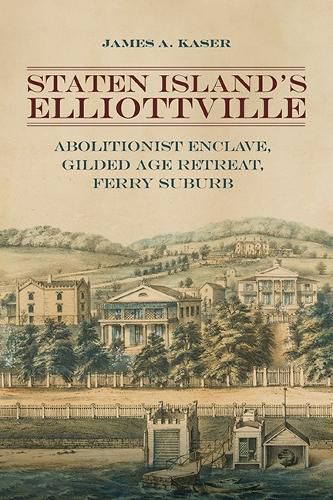Readings Newsletter
Become a Readings Member to make your shopping experience even easier.
Sign in or sign up for free!
You’re not far away from qualifying for FREE standard shipping within Australia
You’ve qualified for FREE standard shipping within Australia
The cart is loading…






The story of a 19th century Staten Island town that nurtured the careers of nationally significant reformers, abolitionists, and transcendentalists.
This book traces five decades of community life in a nineteenth-century Staten Island neighborhood informally called Elliottville, where extraordinary people lived. Its history illuminates the impact of transformative cultural, social, economic, and political change stemming from abolitionism, transcendentalism, the women's suffrage movement, and the rapid growth of the nation. Begun in 1839 as a therapeutic retreat, New Englanders with ties to Emerson settled there, forming a distinctive community. Their achievements in art, literature, and social reform attracted even more like-minded people, including Francis George Shaw, George William Curtis, Theodore Winthrop, Robert Gould Shaw, Helena de Kay Gilder, Charles de Kay, Anna Leonowens, and Maria "Midy" Morgan. Its vibrant intellectual life was threatened by an influx of Gilded Age men in the 1870s and destroyed when a freight rail line separated Elliottville from the Kill Van Kull. Drawing on a wealth of archival material and unique maps and illustrations, this book gives a vivid picture of how one small community could impact the country's intellectual and social development.
$9.00 standard shipping within Australia
FREE standard shipping within Australia for orders over $100.00
Express & International shipping calculated at checkout
The story of a 19th century Staten Island town that nurtured the careers of nationally significant reformers, abolitionists, and transcendentalists.
This book traces five decades of community life in a nineteenth-century Staten Island neighborhood informally called Elliottville, where extraordinary people lived. Its history illuminates the impact of transformative cultural, social, economic, and political change stemming from abolitionism, transcendentalism, the women's suffrage movement, and the rapid growth of the nation. Begun in 1839 as a therapeutic retreat, New Englanders with ties to Emerson settled there, forming a distinctive community. Their achievements in art, literature, and social reform attracted even more like-minded people, including Francis George Shaw, George William Curtis, Theodore Winthrop, Robert Gould Shaw, Helena de Kay Gilder, Charles de Kay, Anna Leonowens, and Maria "Midy" Morgan. Its vibrant intellectual life was threatened by an influx of Gilded Age men in the 1870s and destroyed when a freight rail line separated Elliottville from the Kill Van Kull. Drawing on a wealth of archival material and unique maps and illustrations, this book gives a vivid picture of how one small community could impact the country's intellectual and social development.